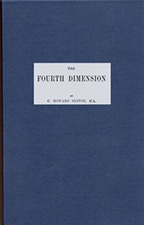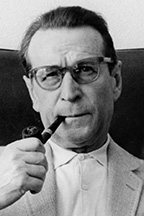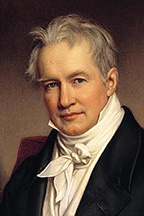Way beyond Flatland
Many readers may be familiar with Edwin Abbott Abbott’s 1884 novel Flatland, about a fictional world of two-dimensional beings. British mathematician Charles Howard Hinton clearly read Abbott’s book and takes the premise to a whole other level with his nonfiction mathematical treatise The Fourth Dimension, published in 1904. Hinton starts by imagining how a two-dimensional being might experience a three-dimensional object moving through its planar universe. He then expands that idea by speculating upon how we might perceive a proposed fourth-dimensional reality from the perspective of our three-dimensional space.
Because we are third-dimensional beings, it is very difficult for us to imagine a fourth-dimensional space or object. Adding to that difficulty is the fact that when we draw geometrical concepts on paper, the best we can create is a two-dimensional approximation. It is hard enough to illustrate third-dimensional solids and space, much less any dimensions higher than that. The bulk of Hinton’s Fourth Dimension, therefore, is devoted to creating representational models of fourth-dimensional concepts, both on paper and also using an assortment of cubes, presumably crafted of wood or cardboard. Just as a cube is the three-dimensional equivalent of a square, the fourth-dimensional equivalent of the cube is a tesseract, in which the boundaries of the cube expand along a fourth axis invisible to our three-dimensional senses. To illustrate this concept, Hinton has come up with a very ingenious but extremely complicated system of color-coding the faces, edges, and corners of cubes that any earnest student, not just a mathematician, can use to visualize the movement of four-dimensional bodies through our three-dimensional space. At the end of the book, Hinton presents an even more complicated scheme for verbally notating all of these geometrical elements, so overly complicated in fact that one questions his sanity.
There is also a philosophical element to Hinton’s study. For thousands of years, philosophers, most notably Plato, have pointed out that we only know as much of the universe as we can learn through our senses, which only give us a limited and distorted view of reality. Plato proposed that there was a truer and higher world beyond our sensory perception. While I’ve always thought of Plato’s dualism as somewhat fantastical, his theories of a higher reality can be scientifically feasible if one accepts the idea of higher geometrical dimensions beyond the third dimension in which we live and perceive. In this book, Hinton questions what evidence of a fourth-dimensional existence we might be able to discern in our three-dimensional world. The movement of electricity, the symmetry of living beings, and the vortex motion of fluids are all phenomena that he proposes might be attributable to fourth-dimensional causes. In one interesting chapter, Hinton uses his fourth-dimensional concepts to make a connection between Immanuel Kant’s theory of experience and Charles Darwin’s theory of evolution. In another passage he posits that our bodies exist in the third dimension, while our souls, having come from a higher reality, are born with innate knowledge of the fourth dimension. This, however, feels like an unwelcome leap of faith in an otherwise mathematical discussion.
Though quantum mechanics as we know it hadn’t been conceived in Hinton’s time, it is interesting to think of how Hinton’s fourth-dimensional geometry could explain some of the strange phenomena of quantum physics, such as quantum entanglement. These days anyone studying higher physics or mathematics likely has to have some understanding of higher-dimensional geometry. To that end, Hinton’s The Fourth Dimension is a foundational text, like the Euclid’s Elements of 4-D space. The Fourth Dimension is often a difficult book to comprehend, but it is an enjoyable read for its commendable intellectual ambition and its precocious audacity.
Figure 76, showing Hinton’s plotting of different views of a four-dimensional tetrakaidecagon.
If you liked this review, please follow the link below to Amazon.com and give me a “helpful” vote. Thank you.
Because we are third-dimensional beings, it is very difficult for us to imagine a fourth-dimensional space or object. Adding to that difficulty is the fact that when we draw geometrical concepts on paper, the best we can create is a two-dimensional approximation. It is hard enough to illustrate third-dimensional solids and space, much less any dimensions higher than that. The bulk of Hinton’s Fourth Dimension, therefore, is devoted to creating representational models of fourth-dimensional concepts, both on paper and also using an assortment of cubes, presumably crafted of wood or cardboard. Just as a cube is the three-dimensional equivalent of a square, the fourth-dimensional equivalent of the cube is a tesseract, in which the boundaries of the cube expand along a fourth axis invisible to our three-dimensional senses. To illustrate this concept, Hinton has come up with a very ingenious but extremely complicated system of color-coding the faces, edges, and corners of cubes that any earnest student, not just a mathematician, can use to visualize the movement of four-dimensional bodies through our three-dimensional space. At the end of the book, Hinton presents an even more complicated scheme for verbally notating all of these geometrical elements, so overly complicated in fact that one questions his sanity.
There is also a philosophical element to Hinton’s study. For thousands of years, philosophers, most notably Plato, have pointed out that we only know as much of the universe as we can learn through our senses, which only give us a limited and distorted view of reality. Plato proposed that there was a truer and higher world beyond our sensory perception. While I’ve always thought of Plato’s dualism as somewhat fantastical, his theories of a higher reality can be scientifically feasible if one accepts the idea of higher geometrical dimensions beyond the third dimension in which we live and perceive. In this book, Hinton questions what evidence of a fourth-dimensional existence we might be able to discern in our three-dimensional world. The movement of electricity, the symmetry of living beings, and the vortex motion of fluids are all phenomena that he proposes might be attributable to fourth-dimensional causes. In one interesting chapter, Hinton uses his fourth-dimensional concepts to make a connection between Immanuel Kant’s theory of experience and Charles Darwin’s theory of evolution. In another passage he posits that our bodies exist in the third dimension, while our souls, having come from a higher reality, are born with innate knowledge of the fourth dimension. This, however, feels like an unwelcome leap of faith in an otherwise mathematical discussion.
Though quantum mechanics as we know it hadn’t been conceived in Hinton’s time, it is interesting to think of how Hinton’s fourth-dimensional geometry could explain some of the strange phenomena of quantum physics, such as quantum entanglement. These days anyone studying higher physics or mathematics likely has to have some understanding of higher-dimensional geometry. To that end, Hinton’s The Fourth Dimension is a foundational text, like the Euclid’s Elements of 4-D space. The Fourth Dimension is often a difficult book to comprehend, but it is an enjoyable read for its commendable intellectual ambition and its precocious audacity.
Views of the Tesseract, showing Hinton’s color-coding scheme. This is the only color illustration in the 1906 edition of The Fourth Dimension.
Figure 76, showing Hinton’s plotting of different views of a four-dimensional tetrakaidecagon.
If you liked this review, please follow the link below to Amazon.com and give me a “helpful” vote. Thank you.























